King Reef: an Australian first in repurposing oil and gas infrastructure to benefit regional communities
James H. Florisson A D , Andrew J. Rowland A , Euan S. Harvey B , Mathew B. Allen C , Stephanie L. Watts A and Benjamin J. Saunders BA Recfishwest, 3/45 Northside Drive, Hillarys, WA 6025, Australia.
B School of Molecular and Life Sciences, Curtin University, Bentley, WA 6102, Australia.
C Subcon, 86 Sparks Road, Henderson, Perth, WA 6166, Australia.
D Corresponding author. Email: james@recfishwest.org.au
The APPEA Journal 60(2) 435-439 https://doi.org/10.1071/AJ19134
Accepted: 19 February 2020 Published: 15 May 2020
Abstract
The Exmouth Integrated Artificial Reef (King Reef) was deployed in July 2018 and is the first installation in Australia to innovatively combine repurposed oil and gas infrastructure with purpose-built concrete reef modules. The project involved a collaborative approach between industry, government (state and commonwealth), researchers and the community, creating a world-leading engineering solution using science-based habitat enhancement. The project integrated six mid-depth buoys with 49 artificial reef modules, providing more than 27 000 m3 of habitat. Once support structures for subsea facilities, the decommissioned assets are now important habitat features that increase ecosystem productivity. The unique design and configuration of the structures on the sea floor resulted in a rapid increase in the diversity and abundance of marine biota, as detected by a collaboration between citizen scientists and researchers. Within 2 years, over 90 species of fish have already been observed, which is much greater than the sand habitat upon which the reef was installed. The results contribute to informed discussions, about the viability and effectiveness of artificial structures providing industry, regulators and the community with confidence around the benefits and effects of various installations. The Exmouth community has been advocating for the installation of an artificial reef for several years. At King Reef, the integration and repurposing of assets provide a range of long-term benefits to communities, including fostering community ownership and stewardship of these assets while providing new, safe and accessible fishing and diving opportunities.
Keywords: artificial reef, community, fish assemblage, fishing, integrated artificial reef, recreational fishing.
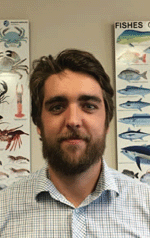
James H. Florisson is a Research and Development Officer at Recfishwest. James has extensive experience in the consultation, design, configuration, permitting and monitoring of artificial reefs and other habitat enhancement, restoration and retention activities. He recently created a new framework for the development of habitat enhancement initiatives that has a strong focus on long-term benefits driven by industry and community partnerships. This framework has since been used for the first integrated artificial reef in Australia and is now being used to explore opportunities with several operators on the North West Shelf to provide community-focused solutions to decommissioning challenges. In addition to a Bachelor of Science (Hons), James has completed a Diploma in Fisheries Compliance and Management and the National Seafood Industry Leadership Program. |
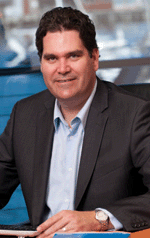
Andrew Rowland is currently the Chief Executive Officer of Recfishwest, a role he has filled since 2012. Andrew studied at Murdoch University and has a PhD in Fisheries Science. He is a Director for Fishability (formally Fishers with Disabilities Association) and is a member of the Recfishing Research Steering Committee (FRDC). Andrew is dedicated to providing innovative solutions that can help underpin an evolution in aquatic resource management through techniques such as stock enhancement, habitat restoration and artificial reef systems to help future-proof fishing against many of the challenges it faces. He believes that the recreational fishing sector has an important role to play in creating fish stocks with greater abundances and resilience than ever before, and in helping adapt our current management practices to protect and develop great fishing experiences. |
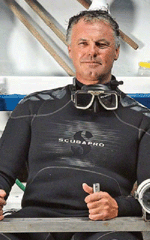
Euan S. Harvey is a Professor of Marine Science at Curtin University in the School of Molecular and Life Sciences. Euan's research focuses on marine fishes and how physical (both natural and man-made) structures and oceanographic processes influence their composition and distribution. Over the past 20 years, a focus of Euan's research has been developing, testing and implementing robust fishery-independent sampling techniques that use underwater stereo video technology for sampling the relative abundance and lengths of fish remotely. These systems have been adopted for various aquatic research and monitoring globally. |
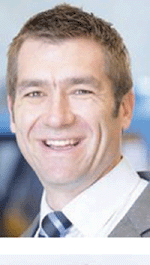
Matthew Allen is the founder of Subcon. Matthew started his career with 6 years in the merchant navy, followed by a Bachelors of Engineering in Naval Architecture at the Australian Maritime college. Matthew subsequently built a successful career as an offshore construction manager for tier one construction companies, including Clough, Technip and Saipem. Later Matthew worked for Woodside and Chevron as an Offshore Installation Manager for the 70 000-Te NRB platform installation and later Thevenard Island Retirement Project. Matthew also has an Executive MBA from the University of Western Australia. In 2011, Matthew and Dr Kervin Yeow cofounded Subcon to provide specialist blue solutions for reef restoration, marine foundations, stabilisation, scour and erosion control. The business has grown internationally, with offices in Delft, Singapore, Dongguan and Perth, and employs >25 people full time. |
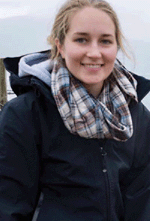
Stephanie L. Watts is a research officer at Recfishwest. Her main roles involve leading research projects with community volunteers, partners and scientists including Reef Vision, Recfishwest’s citizen science artificial reef monitoring program, across Western Australia. In addition to a Bachelor of Science, in 2018 Stephanie completed her Honours degree, which assessed the fish assemblages associated with oil and gas infrastructure using remote-operated vehicle techniques within the Gulf of Thailand. Stephanie has a great interest in an alternative use for obsolete oil and gas infrastructure as artificial reefs, and understands the benefit these converted installations may provide to end-user groups and stakeholders, including recreational fishers. Steph also conducts biological sampling at game fishing tournaments and is a strong advocate for building community capacity and stewardship throughout the recreational fishing community. |
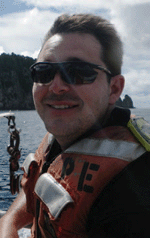
Ben Saunders is a lecturer at Curtin University (Fish Ecology Laboratory). Ben gained his PhD through the University of Western Australia, and BSc(Hons) through the University of Wales Aberystwyth (UK). Ben’s research focuses on marine fishes. His current research focus is on reef fish assemblages in Australia’s south-west, but Ben has active research interests, including spatial distribution and habitat associations of fishes, behavioural ecology, community ecology and the influence of anthropogenic structures and environmental changes on fishes. |
References
Bortone, S. A. (1998). Resolving the attraction–production dilemma in artificial reef research: some yeas and nays. Fisheries (Bethesda, Md.) 23, 6–10.| Resolving the attraction–production dilemma in artificial reef research: some yeas and nays.Crossref | GoogleScholarGoogle Scholar |
Florisson, J. H., Tweedley, J. R., Walker, T. H. E., and Chaplin, J. A. (2018). Reef Vision: a citizen science program for monitoring the fish faunas of artificial reefs. Fisheries Research 206, 296–308.
| Reef Vision: a citizen science program for monitoring the fish faunas of artificial reefs.Crossref | GoogleScholarGoogle Scholar |
Langlois, T. J., Harvey, E. S., Fitzpatrick, B., Meeuwig, J. J., Shedrawi, G., and Watson, D. L. (2010). Cost-efficient sampling of fish assemblages: comparison of baited video stations and diver video transects. Aquatic Biology 9, 155–168.
| Cost-efficient sampling of fish assemblages: comparison of baited video stations and diver video transects.Crossref | GoogleScholarGoogle Scholar |
Logan, J. M., Young, M. A., Harvey, E. S., Schimel, A. C. G., and Ierodiaconou, D. (2017). Combining underwater video methods improves effectiveness of demersal fish assemblage surveys across habitats. Marine Ecology Progress Series 582, 181–200.
| Combining underwater video methods improves effectiveness of demersal fish assemblage surveys across habitats.Crossref | GoogleScholarGoogle Scholar |
Powers, S. P., Grabowski, J. H., Peterson, C. H., and Lindberg, W. J. (2003). Estimating enhancement of fish production by offshore artificial reefs: uncertainty exhibited by divergent scenarios. Marine Ecology Progress Series 264, 265–277.
| Estimating enhancement of fish production by offshore artificial reefs: uncertainty exhibited by divergent scenarios.Crossref | GoogleScholarGoogle Scholar |
Rilov, G., and Benayahu, Y. (2000). Fish assemblage on natural versus vertical artificial reefs: the rehabilitation perspective. Marine Biology 136, 931–942.
| Fish assemblage on natural versus vertical artificial reefs: the rehabilitation perspective.Crossref | GoogleScholarGoogle Scholar |
Seaman, W. (2000). ‘Artificial Reef Evaluation: With Application to Natural Marine Habitats.’ (CRC Press: Boca Raton.)
Watson, D. L., Harvey, E. S., Anderson, M. J., and Kendrick, G. A. (2005). A comparison of temperate reef fish assemblages recorded by three underwater stereo-video techniques. Marine Biology 148, 415–425.
| A comparison of temperate reef fish assemblages recorded by three underwater stereo-video techniques.Crossref | GoogleScholarGoogle Scholar |


